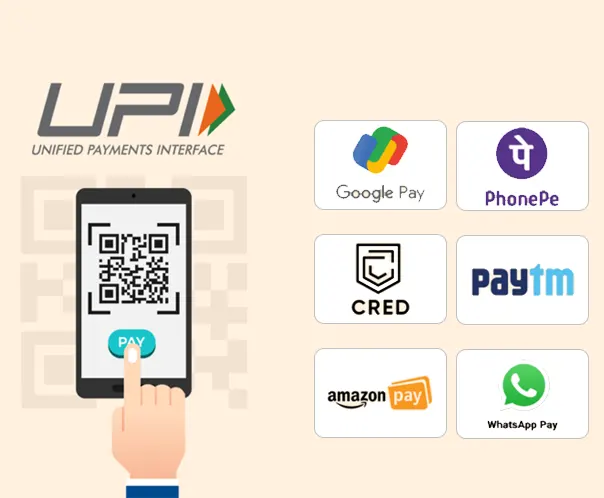Payments are the new battlefield in which tech giants are all set to challenge each other. Google is not too far behind in this race and has launched a payment app named Google Pay. Is it going to be a successful one?
The reason for the growth of this mobile wallet app is that it has all the functionalities and benefits along with being secure and convenient for the user. Unlike other wallets, it provides a lot of features and services to its users. PhonePe is a mobile payment app that allows money transfers and online payment to buy goods and services. It was first launched in September 2015 by the Flipkart Group.
Intense competition among tech giants has been triggered by the launch of Google Pay and Apple’s entry into the mobile payments market.
According to reports and surveys, the global mobile wallet market revenue increased from $450 billion to $750 billion, driven by the rise in online payment wallet usage. The popularity of mobile wallet apps like PhonePe, Paytm, and Google Pay is a clear sign of their success.
PhonePe saw a growth of 857.22% in UPI transactions, followed by PayTm at 827.68% and Google Pay at 337.73%. PhonePe, a leading mobile wallet app, has undoubtedly made a significant impact on the market with its robust presence and user-friendly features. Its success has inspired numerous IT companies worldwide, particularly in India, to venture into the development of their personalized mobile wallet apps.
These companies recognize the immense potential and demand for convenient, secure, and efficient mobile payment solutions. With PhonePe’s market dominance as a guiding example, these IT companies aim to create innovative and personalized mobile wallet apps that cater to specific user preferences and requirements. By offering unique features, seamless transactions, and enhanced security measures, these emerging apps aspire to carve their niche in the competitive digital payment landscape and capture a share of the growing market.
The app is designed in a very simple way and it is easy to use. There are no major problems with the app and it works fine. I was just writing a blog about the possible effects of the US government shutdown on the Indian IT sector, and here’s some more news about a company in my hometown.
Online payment apps like Paytm, PhonePe, and Google Pay have revolutionized the way we make monetary transactions. These wallet apps provide users with a convenient and secure platform to send and receive money, make bill payments, and even purchase goods and services.
If you’re considering developing an online payment app similar to these successful platforms, here are some key features and actions needed to create a wallet app that offers benefits and contributes to the economy.
- User-Friendly Interface: A wallet app should have a clean and intuitive user interface, making it easy for users to navigate and perform transactions effortlessly.
- Registration and Account Setup: Allow users to create an account by providing their basic details such as name, mobile number, and email address. Implement robust security measures like two-factor authentication to protect user data.
- Wallet Integration: Integrate a digital wallet system that enables users to add funds from their bank accounts or credit/debit cards securely. Implement encryption and security protocols to safeguard financial information.
- Peer-to-Peer Money Transfer: Facilitate seamless money transfer between users, eliminating the need for traditional methods like cash or checks. Enable users to send money to their contacts or scan QR codes for quick transactions.
- Bill Payments and Utility Services: Provide users the convenience of paying bills, such as electricity, water, and phone bills, directly from the app. Integrate utility services like mobile recharge, DTH recharge, and ticket bookings.
- Merchant Integration: Enable business owners to easily integrate their businesses into the app, allowing users to make payments for products and services directly from their wallets. Provide features like a digital catalog and inventory management to enhance the merchant experience.
- Offers, Discounts, and Cashbacks: Implement loyalty programs, cashback offers, and discounts to incentivize users to use the app. This helps in attracting and retaining a large user base.
- Multi-Lingual Support: Consider providing multi-lingual support to cater to a wider user base, ensuring that language barriers do not hinder user adoption.
- Security Measures: Implement robust security measures such as SSL encryption, two-factor authentication, and regular security audits to protect user data and transactions.
- Seamless Integration with Banks: Ensure smooth integration with various banks to enable easy fund transfer to and from user bank accounts.
Key Features Required to Develop a Wallet App like Paytm, Google Pay, PhonePe!
Wallet apps like Paytm, Google Pay, and PhonePe have revolutionized the industry, providing users with a convenient, secure, and efficient way to make payments, transfer funds, and manage their finances. If you’re considering developing a wallet app similar to these successful platforms, here are the key features and actions you’ll need to take during the development process.
User Registration and Profile: Enable users to create an account by providing their personal details such as name, email, and mobile number. Implement a seamless registration process with verification to ensure users’ security and privacy.
Secure Payment Gateway Integration: Integrate a reliable and secure payment gateway to facilitate seamless transactions. Implement robust encryption protocols to protect sensitive financial data during the payment process.
Digital Wallet Integration: Include a digital wallet feature that allows users to store money securely within the app. Ensure compatibility with popular payment methods such as credit cards, debit cards, net banking, and UPI.
Peer-to-Peer (P2P) Money Transfer: Enable users to send and receive money from contacts in their phonebook. Implement features such as QR code scanning or phone number-based transfers for quick and hassle-free transactions.
Bill Payments and Recharge: Integrate bill payment functionalities, allowing users to pay utility bills, mobile recharges, DTH recharges, and more directly from the app. Partner with service providers to offer a wide range of bill payment options.
Merchant Integration: This allows businesses to integrate their products or services into the app, enabling users to make payments seamlessly. Provide features such as product catalogs, inventory management, and order tracking to enhance the merchant experience.
In-App Offers, Discounts, and Cashbacks: Implement loyalty programs, cashback offers, and discounts to incentivize users to use the app. Create partnerships with banks, retailers, and service providers to offer exclusive deals and promotions.
Transaction History and Notifications: Provide users with a transaction history feature, enabling them to track their payment activities. Send real-time notifications for successful transactions, refunds, and offers/promotions to keep users engaged and informed.
Multi-Lingual Support: To cater to a diverse user base, consider providing multilingual support to ensure a seamless user experience for non-native English speakers.
Robust security measures: Implement strong security measures to protect user data and transactions. Use encryption algorithms to secure sensitive information, such as bank account details and transaction history. Implement two-factor authentication for an added layer of security, requiring users to provide an additional verification step, such as a one-time password (OTP), during login or transaction confirmation.
Customer Support and Feedback: Offer robust customer support channels, including email support, live chat, and a dedicated helpline, to assist users with their queries or concerns. Regularly gather user feedback to improve the app’s functionality and address any issues that arise.
Cross-Platform Compatibility: Ensure that the app is compatible with various platforms, including iOS and Android, to reach a wider user base. Develop a responsive and user-friendly interface that adapts seamlessly to different screen sizes and resolutions.
Prior Actions Needed to Develop a Wallet App!
Planning and Research: Conduct thorough market research to understand user expectations, competitor offerings, and industry trends. Define your target audience and identify the functionalities your app should include.
Design and User Experience: Create a visually appealing and intuitive user interface. Collaborate with UX/UI designers to develop wireframes and prototypes that prioritize ease of use and a seamless user experience.
Collaboration with Payment Gateway Providers: Establish partnerships with trusted and secure payment gateway providers to enable seamless transaction processing. Ensure compliance with various payment regulations and standards.
Backend Development: Develop a robust backend infrastructure that can handle high volumes of transactions and securely store user data. Implement database management systems and server architecture that can scale with the growing user base.
Frontend Development: Build the front end of the app, focusing on responsiveness, seamless navigation, and intuitive user interaction. Utilize programming languages such as Java, Swift, or React Native to develop the app for different platforms.
Testing and Quality Assurance: Perform comprehensive testing on the app to ensure functionality, security, and performance. Conduct user acceptance testing (UAT) to identify and fix any bugs or issues. Ensure compliance with industry standards and regulations.
Launch and Marketing: Prepare a comprehensive marketing strategy to promote your app. Leverage social media, advertising, and partnerships to increase user adoption and awareness. Continuously monitor user feedback and make necessary improvements based on user suggestions.
Developing a wallet app like Paytm, Google Pay, or PhonePe requires careful planning, collaboration with payment gateway providers, and a relentless focus on security and user experience.
How Do Wallet apps like Paytm, Google Pay, and PhonePe offer benefits and contribute to the economy and money transaction process?
- Convenience: Wallet apps offer users the convenience of making payments anytime and anywhere, eliminating the need for physical cash or cards.
- Speed: Transactions through wallet apps are processed in real time, providing instant payment confirmation to users and saving time.
- Security: Wallet apps use secure encryption and authentication methods, making transactions safer than carrying cash or using physical cards.
- Financial Inclusion: Wallet apps enable individuals who may not have access to traditional banking services to participate in the digital economy.
- Cashback and Rewards: Wallet apps often provide cashback rewards, discounts, and loyalty programs, encouraging users to make digital payments and contribute to the economy.
- Digital Receipts and Transaction History: Wallet apps offer users a detailed transaction history, making it easier to track expenses and manage finances.
- Reduced Costs: Wallet apps offer cost savings for businesses by eliminating the need for physical infrastructure, such as cash registers or card terminals.
- Increased Transparency and Accountability: Digital transactions through wallet apps leave a traceable record, reducing the potential for fraud and promoting accountability.
- Boost to Small Businesses: Wallet apps offer a platform for small businesses to accept digital payments, expanding their customer base and driving economic growth.
- Encourage Currency Digitization Process: Wallet apps contribute to the digitization of payment processes, reducing reliance on cash-based transactions and driving the overall digital economy.
- Stimulates Cashless Economy: Wallet apps like Paytm, Google Pay, and PhonePe promote a cashless economy by encouraging users to adopt digital payment methods instead of relying on physical currency. This reduces the circulation of cash, leading to greater transparency and efficiency in transactions.
- Enables Financial Inclusion: Wallet apps provide access to financial services for individuals who may not have traditional bank accounts. People can use these apps to store money, make payments, and transfer funds, helping to bridge the financial gap and promote economic inclusion.
- Facilitates E-commerce Growth: Wallet apps play a vital role in the growth of e-commerce. By providing a secure and convenient payment method, these apps enable online businesses to flourish. They boost customer confidence in making digital purchases, leading to increased sales and revenue.
- Encourages Digitization of Small Businesses: Wallet apps offer small businesses an opportunity to accept digital payments without the need for complex infrastructure or expensive point-of-sale systems. This allows them to expand their customer base, increase sales, and compete in the digital marketplace.
- Streamlines Bill-Payments: Wallet apps can be used to pay taxes, utility bills, and government fees, simplifying and expediting the payment process for citizens. This digitization reduces paperwork, minimizes administrative costs, and contributes to the efficient functioning of government services.
- Reduces Operational Costs: Wallet apps help businesses reduce operational costs associated with cash handling, such as security, transportation, and counting. By promoting digital payments, these apps streamline accounting processes and eliminate the risks and expenses associated with handling physical currency.
- Enhances Financial Tracking and Budgeting: Wallet apps provide users with detailed transaction histories, helping them track and monitor their expenses. This visibility enables better financial planning and budgeting, leading to improved personal financial management.
- Promotes Contactless Payments: Wallet apps support contactless payments through NFC (Near Field Communication) technology, allowing users to make quick and secure transactions by simply tapping their smartphones. This feature has become particularly relevant during the COVID-19 pandemic, where minimizing physical contact is crucial.
- Encourages Responsible Spending: Wallet apps offer features that allow users to set spending limits, create budgets, and receive notifications for their financial activities. This promotes responsible spending habits and encourages financial discipline.
Wallet apps like Paytm, Google Pay, and PhonePe offer numerous benefits to individuals, businesses, and the economy as a whole. They promote convenience, financial inclusion, and digitization while reducing costs and enhancing financial activities to help strengthen the economy of the country itself.
Developing innovative wallet applications like Paytm, Google Pay, and PhonePe:
In the realm of financial transactions, wallet application development plays a crucial role in providing users with secure and convenient digital payment solutions. Maven Technology, a leader in mobile app development, offers expertise in developing innovative wallet applications that cater to the needs of businesses and consumers alike.
Maven Technology could be your trusted leader in wallet application development, providing innovative solutions that cater to the evolving needs of businesses and individuals in the digital payment landscape. With a focus on security, user experience, and seamless functionality, Maven Technology creates wallet applications that offer convenience, reliability, and enhanced financial capabilities.
By integrating secure payment gateways, Maven Technology ensures that transactions within wallet applications are protected and encrypted, giving users peace of mind when conducting financial transactions. The user-friendly interfaces designed by Maven Technology make navigating the wallet app intuitive and effortless, providing a seamless user experience.
Solution:
Maven Technology’s wallet applications incorporate features such as peer-to-peer fund transfers, bill payments, recharge options, and loyalty programs. These features contribute to the growth of the digital economy by encouraging cashless transactions, promoting financial inclusion, and fostering customer loyalty.
Maven Technology will help you incorporate state-of-the-art measures to safeguard user data and financial information. Integration with banks and partners ensures seamless fund transfers, secure verifications, and expanded service offerings within the wallet application.
Maven Technology will be ready to excel in wallet application development, providing businesses and consumers with user-friendly, and feature-rich digital payment solutions. Our expertise contributes to the growth of the digital economy, empowering individuals, promoting financial inclusion, and enhancing the overall user experience in the realm of mobile finance.




